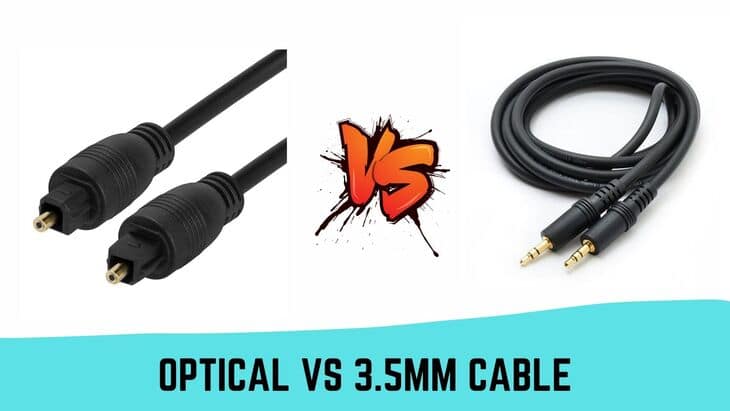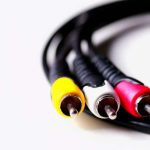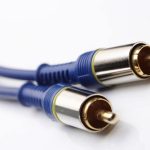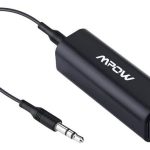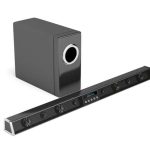Getting the best sound output from your audio system requires getting many things right. One of the major things you need to get right is using the right audio cables to connect speakers to the audio source. There’re many types of audio cables used in setting up sound systems. Among the most commonly used audio cables are optical audio cables and 3.5mm audio cables.
As a music enthusiast, you’ve probably come across these two types of audio cables. But do you know how they differ? What are their applications? How do they work and what do they look like? Which audio cable offers higher quality audio transmission between 3.5mm vs optical? In this article, we’ll discuss optical vs 3.5mm audio cables to help you understand their differences and applications.
Optical Audio Cable
An optical audio cable is a great option for sending high-quality sound signals between compatible devices. An optical audio connection is also referred to as a TOSLINK connection.
When connecting two audio devices with an optical cable, one of the devices should have an optical output that sends out an audio signal such as a TV. The other device should have an optical input to receive the audio signal such as an amplifier or an active speaker.
Some optical ports, both input, and output come with a protective covering that should be removed before you plug in the optical cable. You can see a red light inside the port upon removing the cap as long as the device is turned on.
Upon inserting the cable, it’ll produce a clicking sound. The clicking sound will tell you that the cable has been plugged into place correctly. An optic cable only fits one way. One side of the cable is squared whereas the opposite side has angled corners.
Applications of an Optical Audio Cable
An optical cable is used in making a digital connection to send digital audio signals between two support devices. Digital audio can be either 5.1 surround sound or stereo sound. It’s commonly used in connecting a TV to a 5.1 sound system.
If your TV has an optical output, you can connect it to an amplifier or 5.1 home theater system that has an optical input to enhance the sound output of your TV. Other kinds of sound equipment that often have an optical output are game consoles, DVD players, and Blu-ray.
Devices that often have an optical input include AV receivers, soundbars, amplifiers, and high-fidelity digital-to-analog converters.
Supported Audio Formats
Not all audio formats can work with optical connections. The supported audio formats include:
- Compressed DTS Digital Surround
- DTS-ES Discrete 6.1
- DTS-ES Matrix 6.1
- Compressed Dolby Digital 2.0
- Compressed Dolby Digital 5.1
- Dolby Digital EX
- Lossless 2.0 PCM Audio
If you attempt to play unsupported audio formats through an optical cable connection, the sound output will be downmixed into a lower resolution audio signal. Thus, you’ll get poor sound output.
If your AV receiver and the audio source equipment support HDMI, you’d rather use HDMI for sound transfer. The reason behind this is that HDMI supports all kinds of audio formats and can also send video signals. However, if your equipment doesn’t have HDMI, then you should use an optical connection for the supported audio formats.
Maximum Supported Length
Optical cables may not work for extremely long cable runs. A premium quality optical cable works best within a length of 5 meters. You can also find an optical cable that can work well in a length of 10 meters. However, an optical cable with a length of more than 10 meters won’t deliver quality audio.
Also, some devices may not work well with longer optical cable runs. Thus, the kind of devices you’re using will also determine the maximum cable length to use.
3.5mm Audio Cable
The 3.5mm audio cable is used in making audio connections between devices that support various kinds of 3.5mm connections. At least one of the devices needs to have a 3.5mm port. Essentially, a 3.5mm port is a miniature audio port that’s mostly used with portable devices. Although this technology is also used in larger sound equipment, its miniature size makes it perfect for smaller devices.
Applications of 3.5mm Audio Cable
The 3.5mm cable is ideal for use in making sound connections from devices that have a 3.5mm output port into active speakers or amplifiers in form of 3.5mm to RCA connections. They’re also used in 3.5mm to 3.5mm connections and RCA to 3.5mm connections.
You’ll often find a 3.5mm port in most portable devices such as laptops, portable CD/DVD players, MP3 players, and mobile phones. You can also find a 3.5mm port in larger devices such as AV receivers, computers, and TVs.
There’re several kinds of 3.5mm audio cable combinations including:
- 3.5mm to RCA- The cable connects a device with a 3.5mm output port to a device with RCA input ports. In this cable, the end with the 3.5mm plug is inserted into a 3.5mm output port whereas the end with the RCA plugs is inserted into the RCA ports. RCA plugs are colored differently. The RCA plug colored red is for stereo audio or the right channel whereas the RCA plug colored white is for the left or mono channel.
- 3.5mm to 3RCA- The cable features a 3.5mm plug on one end and 3 colored RCA plugs on the other end. The cable is used to connect a 3.5mm output port to audio and S-video signals. Two of the RCAs are colored white and red for audio and the third RCA plug is colored yellow for S-video. This type of connection is mostly used for connecting camcorders and cameras.
- Female 3.5mm jack to RCA- The cable features a female 3.5mm connector on one end and 2 RCA connectors on the other end. It’s mainly used for extending a 3.5mm cable by inserting a 3.5mm male jack into the female 3.5mm jack.
- RCA to 3.5mm mono- The cable features RCA plugs at one end and a 3.5mm mono plug on the other end. The cable is used for connecting smaller devices to other supported devices such as mixers. The cable only delivers a mono sound signal.
- 3.5mm male to 3.5mm female- The cable features a 3.5mm male plug on one end and a female 3.5mm jack on the other end. The cable is mainly used for extending the length of a 3.5mm cable connection. For instance, you can extend your headphone to a TV with this cable to watch your favorite music videos or TV shows without disturbing anyone else in the room.
- 3.5mm patch cable- The cable features a male 3.5mm plug on both ends. The cable is used to connect a device with a 3.5mm output port to a device with a 3.5mm input port. It’s mostly used to connect an MP3 player or smartphone to a car stereo.
Supported Audio Formats
3.5mm cables support the transmission of stereo analog audio formats. They’re also ideal for transmitting mono sound. However, they don’t transmit digital audio formats.
Maximum Supported Length
You can extend the length of a 3.5mm cable by up to 30 meters without having any issues with the audio quality. You can extend shorter 3.5mm cables with several 3.5mm males to 3.5mm female cables. Also, a 3.5mm patch cable can run to 30 meters without reducing the sound quality.
Optical Audio Cable Vs 3.5mm- Which Is Better?
When looking at optical audio vs 3.5mm, there’re several notable differences between the two. For instance, 3.5mm audio cables are more ideal for longer cable runs than optical audio cables. Optical cables tend to lose data over longer cable connections while 3.5mm cables don’t lose data. Also, 3.5mm cables come in several types while optical audio cables are only available in one type.
With respect to durability, optical cables are more likely to last longer than 3.5mm cables. Basically, 3.5mm cables feature easily breakable connectors. The connectors on 3.5mm cables can get loose easily, leading to cutting in and out or failure. Thus, you must ensure the 3.5mm cable you’re buying is of premium quality.
Another difference is that 3.5mm cables only transmit analog stereo or mono sound while optical cables transmit digital audio sound. Thus, optical cables transmit higher quality audio than 3.5mm cables.
Optical cables work by transmitting digital audio signals in the form of laser light while a 3.5mm cable uses copper wire to transmit analog audio signals. As a result, optical cables are more expensive than 3.5mm cables due to the technology used in making them.
Also, 3.5mm cables are more prone to interference from electrical sources than optical cables. Thus, 3.5mm cables must be routed farther away from electrical cables to prevent electrical interferences that lead to distortion.
Final Thoughts
kind of cable to use. If your sound setup allows for both connections, use an optical connection for Dolby Surround sound and 3.5mm for stereo sound over longer cable runs. Regardless of the connection option you choose, ensure you invest in high-quality cables for the best sound output.
Michael Evanchuk is a San Francisco-based sound engineer with 20 years’ experience installing, troubleshooting, and repairing commercial, automotive, and household sound equipment. Evanchuk owns an auto stereo center, where he offers highly competitive car audio installation and repair services. He has written dozens of articles on different sound engineering topics, all of which have been published in leading journals, blogs, and websites.

